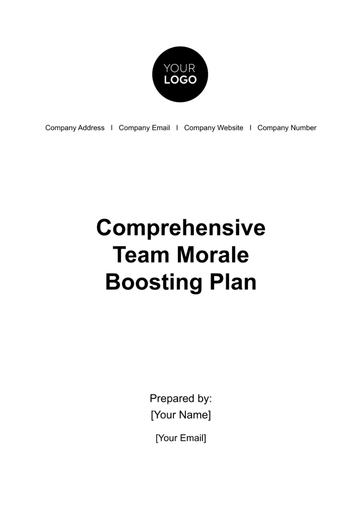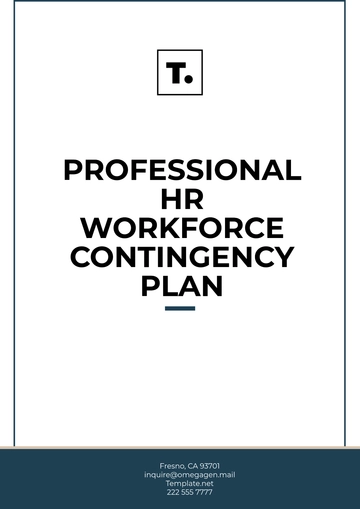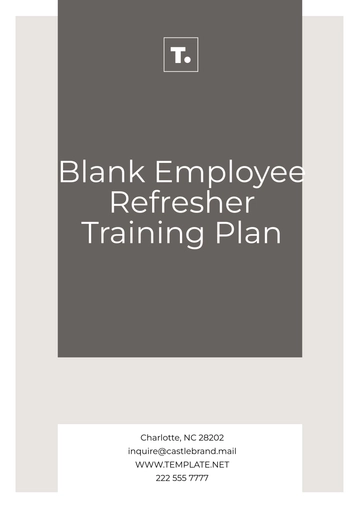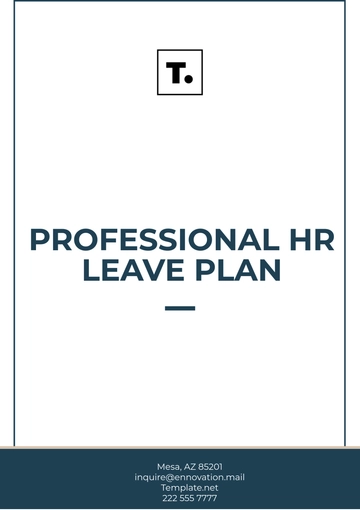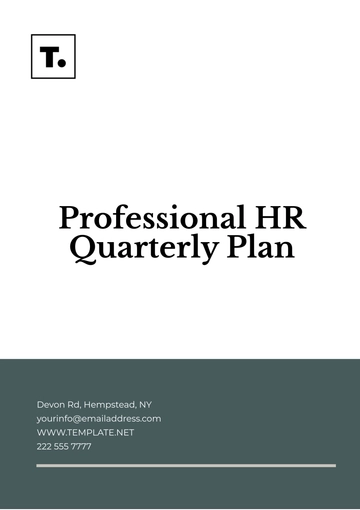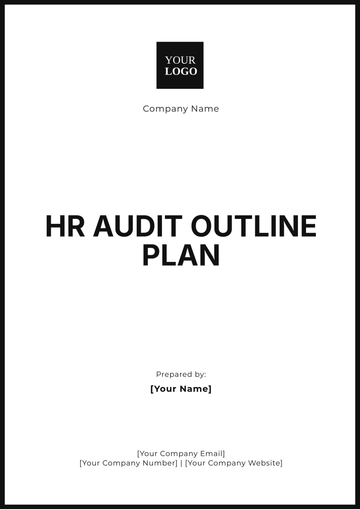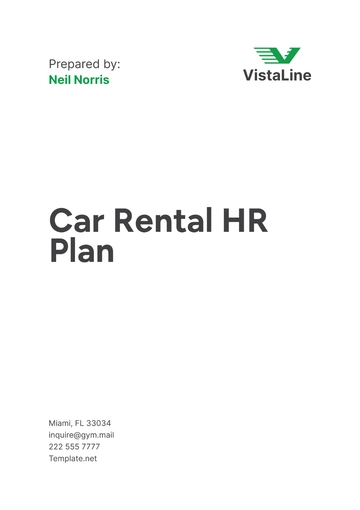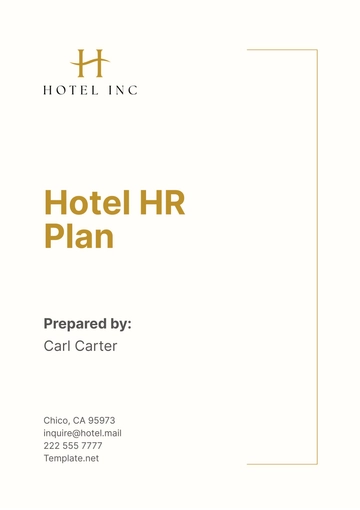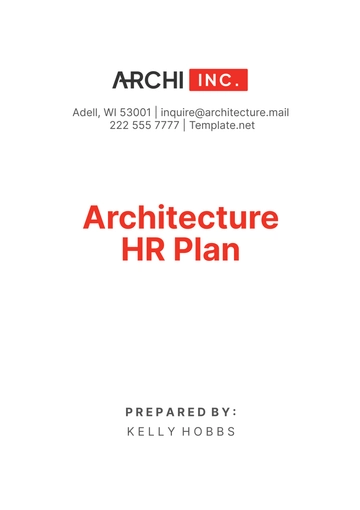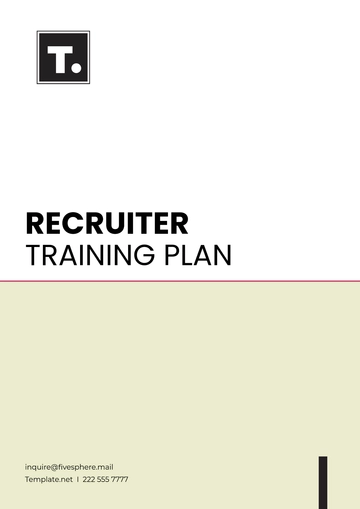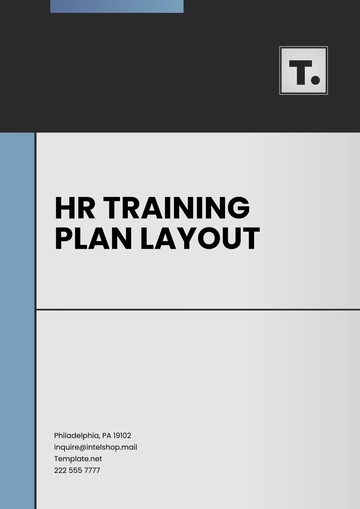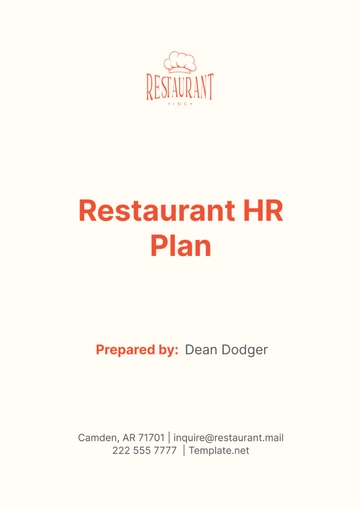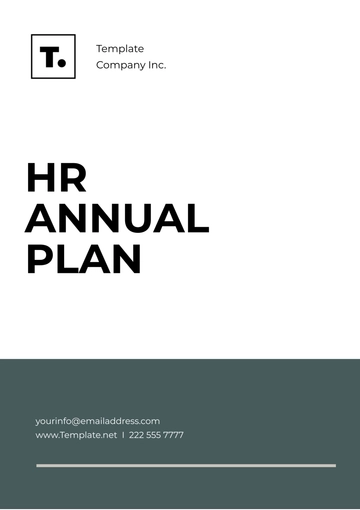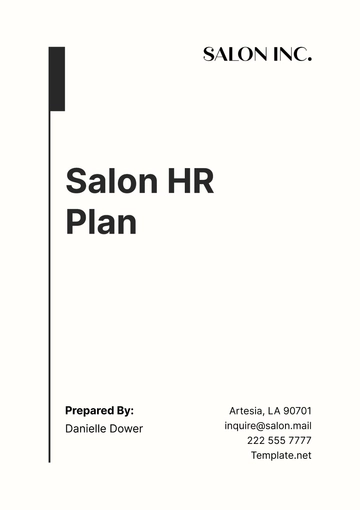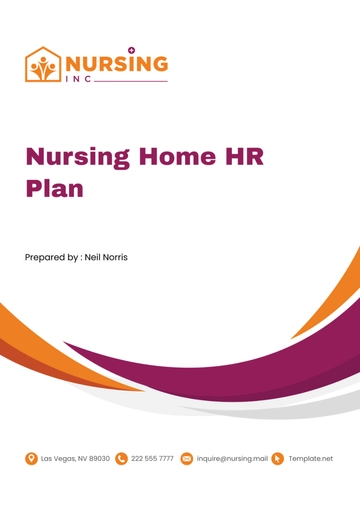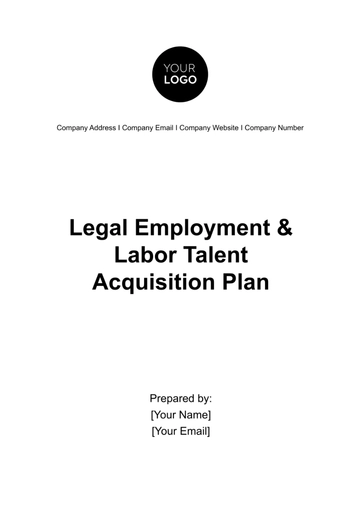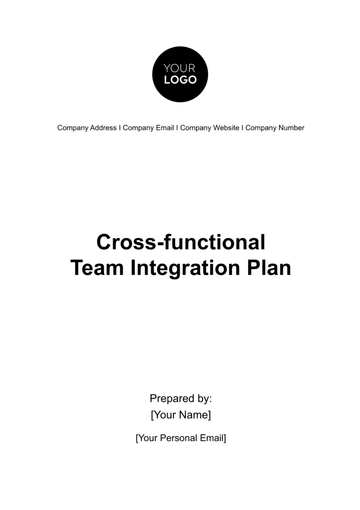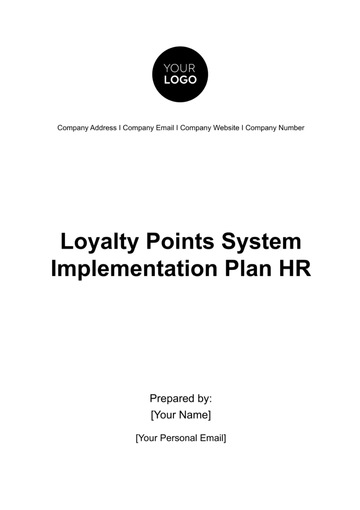Free Food Safety and Hygiene Management Plan HR
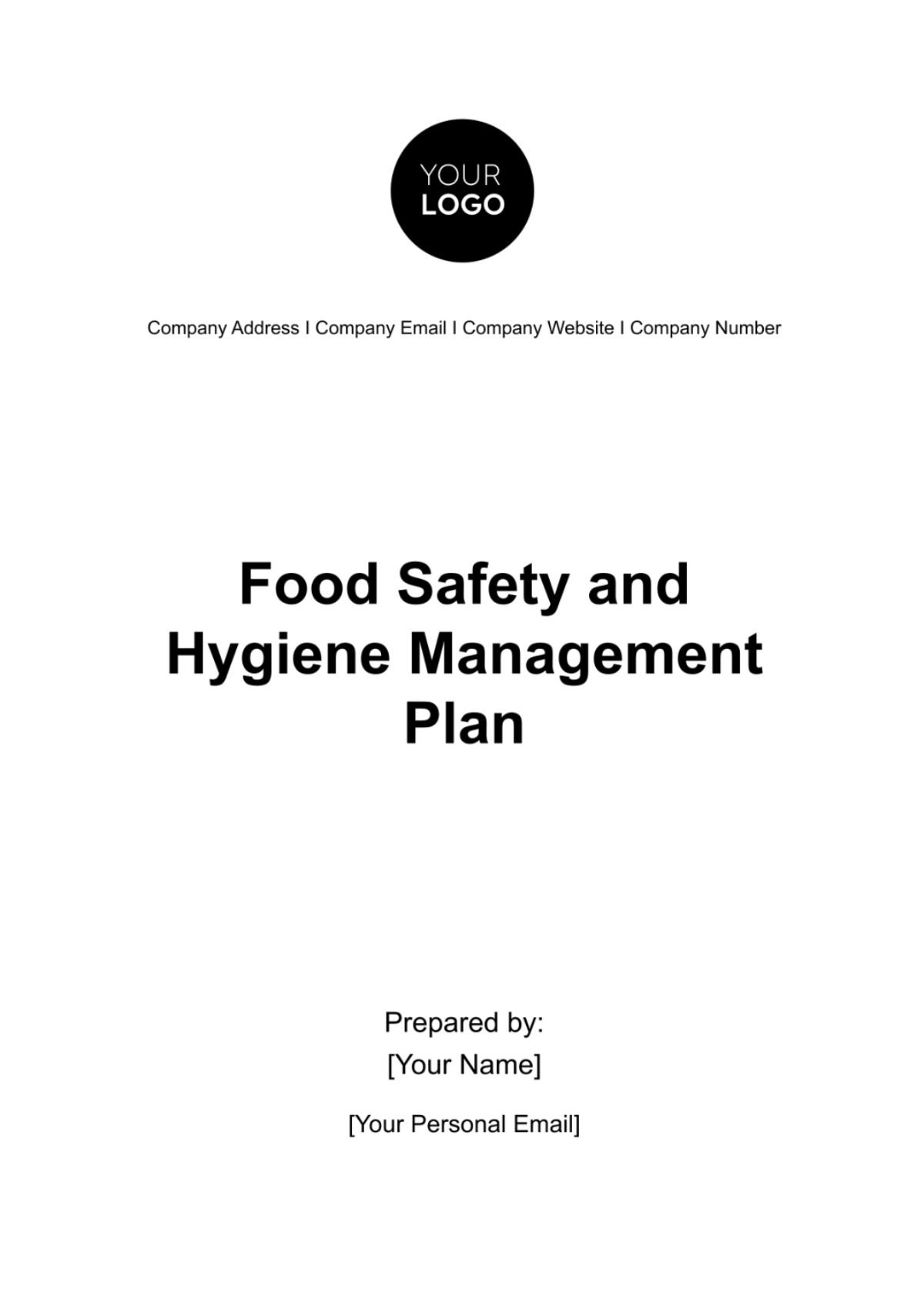
Introduction
The primary objective of this Food Safety and Hygiene Management Plan is to establish a systematic and rigorous framework to ensure the safe handling, preparation, and service of food within [Your Company Name]. This plan is designed to minimize the risk of foodborne illnesses, uphold the highest standards of food safety and hygiene, and ultimately provide our customers with the confidence that the food they consume is safe and wholesome.
Scope
This Food Safety and Hygiene Management Plan applies comprehensively to all facets of operations within [Your Company Name], regardless of the size or scale of the operation. It encompasses every stage of food handling, from the moment raw ingredients are received at our premises to the point when the final dish is presented to the customer. The scope of this plan extends to all employees, contractors, suppliers, and stakeholders involved in any aspect of food production and service.
The plan also incorporates adherence to local, state, and federal food safety regulations, taking into account the specific requirements and guidelines that govern food establishments in our jurisdiction. Furthermore, it outlines the responsibilities of each member of our team in maintaining impeccable food safety and hygiene standards, ensuring that the principles outlined in this plan are upheld consistently throughout our operations.
Legal and Regulatory Compliance
Licensing and Permits
Food Establishment License: [Company Name] shall obtain and prominently display all necessary licenses and permits required for food handling and preparation in accordance with local, state, and federal regulations. These licenses and permits shall be kept up to date and renewed as required.
Health Department Approvals: Regularly liaise with local health authorities to ensure that all necessary approvals are obtained and maintained, including health inspections and permits to operate. Correct any identified issues promptly to maintain compliance.
Regulatory Compliance
Awareness and Adherence: [Your Company Name] commits to staying informed about and strictly adhering to all relevant local, state, and federal food safety regulations and guidelines. This includes but is not limited to regulations governing food storage, handling, preparation, and service, as well as requirements for sanitation, hygiene, and employee training.
Documentation and Record-Keeping: Maintain meticulous records to demonstrate compliance with all regulatory requirements. This includes licenses, permits, food safety inspection reports, and any other documentation relevant to food safety and hygiene.
Reporting and Cooperation: In the event of regulatory inspections or inquiries, [Your Company Name] will cooperate fully with authorities, provide requested information, and take prompt corrective actions as necessary to address any identified non-compliance issues.
Employee Training and Education
Mandatory Training: All employees involved in food handling, preparation, and service shall receive comprehensive food safety and hygiene training upon hire and undergo regular training updates thereafter.
Certifications: Ensure that relevant employees possess and maintain appropriate certifications, such as ServSafe or equivalent, where applicable.
Ongoing Education: Keep staff informed of changes in food safety regulations and industry best practices through ongoing education and training sessions.
Documentation: Maintain records of employee training and certifications, making them readily available for review by regulatory authorities.
By addressing the legal and regulatory aspects of food safety and hygiene in this manner, [Your Company Name] demonstrates a commitment to operating within the bounds of the law while ensuring the safety and well-being of its customers and employees. Compliance with relevant regulations and continuous employee education are fundamental principles for maintaining a high standard of food safety and hygiene.
Training and Education
Employee Training Program
Orientation: All new employees, including kitchen staff, servers, and support personnel, shall undergo a comprehensive orientation program that includes an introduction to [Your Company Name]'s Food Safety and Hygiene Management Plan. This orientation shall take place before they begin any food-related tasks.
Ongoing Training: Regular training sessions will be conducted to reinforce food safety and hygiene principles. These sessions will be scheduled annually or as needed to ensure all employees are up to date on best practices and changes in regulations.
Content: The training curriculum shall cover the following topics, among others:
Basic food safety principles
Personal hygiene, including handwashing and uniform requirements
Cross-contamination prevention
Temperature control for safe food handling
Allergen awareness and handling
Cleaning and sanitizing procedures
Foodborne illness symptoms and reporting
Emergency response protocols
Certification: Employees directly involved in food preparation and handling shall be required to obtain and maintain relevant food safety certifications, such as ServSafe or equivalent, within 6 months of employment.
Role-Specific Training
Kitchen Staff: Employees working in food preparation shall receive specialized training in safe food handling practices, including proper cooking temperatures, thawing and reheating procedures, and the importance of labeling and dating food items.
Servers: Staff responsible for serving food will be trained to provide accurate allergen information to customers and handle food orders and utensils with care to prevent cross-contamination.
Management: Managers and supervisors will receive additional training to ensure they can effectively oversee food safety protocols, conduct regular inspections, and take appropriate corrective actions when necessary.
Knowledge Assessment: Periodic assessments and quizzes will be administered to employees to evaluate their understanding of food safety principles and identify areas requiring improvement.
On-the-Job Evaluation: Supervisors will regularly observe employees during their duties to ensure they are applying food safety and hygiene practices correctly.
Food Handling Procedures
Receiving and Storage
Inspection of Incoming Goods: All incoming food and food-related items shall be thoroughly inspected for quality, integrity, and compliance with established specifications. Damaged or contaminated items shall be rejected and documented for reference.
Temperature Control: Perishable items, including dairy, meat, and poultry, must be promptly stored at appropriate temperatures to prevent spoilage and microbial growth. Establish and maintain designated storage areas with clearly marked temperature zones (e.g., refrigeration units, dry storage).
First-In, First-Out (FIFO): Implement a strict FIFO system to ensure that older food items are used before newer ones to minimize the risk of food spoilage.
Food Preparation
Sanitization: Before food preparation begins, all food contact surfaces, utensils, and equipment must be thoroughly cleaned and sanitized. Cutting boards, knives, and other utensils must be color-coded and used exclusively for specific food types to prevent cross-contamination.
Hand Hygiene: Employees must wash their hands thoroughly with soap and warm water before handling food, after using the restroom, and after touching potentially contaminated surfaces or objects. Maintain adequate handwashing stations with disposable towels and hand sanitizers at convenient locations.
Glove Usage: Use single-use, disposable gloves when handling ready-to-eat foods. Change gloves when switching between tasks or when they become damaged or contaminated.
Cross-Contamination Prevention: Implement strict procedures to prevent cross-contamination between raw and cooked foods, including separate storage and preparation areas. Ensure that cutting boards, knives, and utensils are cleaned and sanitized between tasks.
Cooking
Temperature Control: Ensure that all potentially hazardous foods, such as poultry, seafood, and ground meats, are cooked to their recommended internal temperatures to kill harmful pathogens. Regularly calibrate thermometers to guarantee accuracy.
Cooling and Reheating: Rapidly cool hot foods to safe temperatures within established timeframes, using techniques like ice baths or shallow containers. Reheat cooked foods to an internal temperature of at least 165°F (74°C) before serving.
Serving
Food Holding Temperatures: Maintain proper holding temperatures for hot foods above 140°F (60°C) and cold foods below 41°F (5°C) to prevent bacterial growth.
Serving Utensils: Provide clean and sanitized serving utensils for each dish to prevent cross-contamination between foods. Ensure that utensils are appropriately labeled for allergen information.
Customer Interaction: Train serving staff to handle food with care and avoid physical contact with food items. Provide allergen information upon customer request and be prepared to answer questions about ingredients.
Buffet and Self-Service Stations: Implement measures to protect open food items at self-service stations, such as sneeze guards and utensil handles. Monitor and rotate food items regularly to maintain freshness and safety.
By establishing comprehensive food handling procedures as outlined above, [Your Company Name] maintains strict control over the safety and quality of food at every stage of the process. These procedures minimize the risk of foodborne illnesses and ensure that customers are served safe and wholesome meals.
Cleaning and Sanitizing
Equipment and Surfaces
Cleaning Schedule: Develop and maintain a detailed cleaning schedule that specifies when and how equipment, utensils, and food contact surfaces should be cleaned. Ensure that all cleaning tasks are clearly assigned to specific employees or teams.
Cleaning Agents: Use only approved and food-safe cleaning agents and sanitizers. Keep Material Safety Data Sheets (MSDS) readily available for all cleaning products. Dilute cleaning agents according to manufacturer recommendations and ensure proper labeling of containers.
Food Contact Surfaces: All food contact surfaces, including cutting boards, prep tables, and utensils, must be cleaned and sanitized before and after use.
Implement a color-coded system for cleaning materials and equipment to prevent cross-contamination.
Non-Food Contact Surfaces: Non-food contact surfaces, such as floors, walls, and ceilings, should be cleaned and sanitized regularly to prevent the buildup of dirt, dust, and potential contaminants. Pay special attention to areas that are often overlooked, such as corners and crevices.
Kitchen Equipment: All kitchen equipment, including ovens, stovetops, grills, and fryers, should be cleaned and sanitized according to manufacturer guidelines and as specified in the cleaning schedule. Regularly inspect and maintain equipment to ensure it is in good working condition.
Personal Hygiene
Handwashing Stations: Maintain adequate handwashing stations with hot water, soap, and disposable towels at multiple locations throughout the facility. Ensure that employees are educated on the importance of frequent handwashing.
Employee Uniforms: Establish uniform policies that require all employees to wear clean uniforms, aprons, and hair coverings. Provide designated areas for employees to change into uniforms upon arrival.
Illness Reporting: Implement a policy requiring employees to report illnesses, including symptoms of foodborne illnesses, and stay home when they are sick.
Pest Control
Regular Inspections: Conduct routine pest control inspections by a licensed pest control professional to prevent infestations. Address any pest issues promptly and document actions taken.
Food Storage and Waste Management: Store food items properly in sealed containers to prevent access by pests. Ensure that waste bins and disposal areas are kept clean and emptied regularly.
Hazard Analysis and Critical Control Points (HACCP)
Hazard Analysis
Identify Hazards: Conduct a thorough assessment to identify potential biological, chemical, and physical hazards associated with each step of food handling and preparation within [Your Company Name]. Consider hazards such as microbiological contamination, allergen cross-contact, chemical hazards (e.g., cleaning agents), and physical hazards (e.g., foreign objects).
Assess Risks: Evaluate the likelihood and severity of each identified hazard. Determine which hazards pose significant risks to food safety and are thus critical to address.
Establish Critical Control Points (CCPs)
Determine CCPs: Identify critical control points in the food handling process where control is essential to prevent, eliminate, or reduce the identified hazards to an acceptable level. Examples of CCPs may include cooking, cooling, reheating, and cross-contamination prevention.
Establish Critical Limits: Define specific critical limits for each CCP, which are the criteria that must be met to ensure food safety. Critical limits should be based on scientific data, regulatory requirements, and best practices.
Implement Monitoring Procedures
Monitoring at CCPs: Develop and implement monitoring procedures for each CCP to ensure that critical limits are consistently met. Assign responsible personnel to conduct monitoring activities.
Record Keeping: Maintain detailed records of monitoring activities, including the date, time, monitoring results, and the individuals responsible. Use appropriate forms or checklists to facilitate documentation.
Record Keeping
Record keeping is an essential component of [Your Company Name]'s Food Safety and Hygiene Management Plan. It serves multiple crucial purposes:
Documentation of Compliance: Records provide evidence of compliance with food safety regulations, standards, and internal policies, demonstrating the establishment's commitment to food safety and hygiene.
Traceability: Accurate records enable the tracking of food products from suppliers to consumers, facilitating the identification and removal of potentially unsafe products in the event of recalls or foodborne illness outbreaks.
Continuous Improvement: Historical records help identify trends, patterns, and areas for improvement in food safety practices, enabling [Your Company Name] to take proactive measures to enhance food safety.
Types of Records
[Your Company Name] shall maintain various types of records to support its Food Safety and Hygiene Management Plan:
Training Records: Detailed records of food safety and hygiene training sessions, including the date, topics covered, and attendees' names. Copies of certifications and qualifications of employees, including ServSafe or equivalent certifications.
Temperature Logs: Accurate temperature logs for refrigeration and freezer units, including date, time, temperature readings, and initials of the personnel responsible. Temperature logs for food items during cooking and holding phases, where applicable.
Cleaning and Sanitizing Records: Records of cleaning and sanitizing activities, specifying the areas cleaned, cleaning agents used, and the date and time of each task. Documentation of the maintenance and calibration of cleaning equipment and tools.
Supplier Documentation: Records of supplier certifications, inspections, and approvals. Receipts and invoices for food and non-food items received from suppliers, including details such as supplier name, product description, lot numbers, and delivery dates.
Hazard Analysis and Critical Control Points (HACCP) Records: Documentation related to hazard analysis, critical control points, monitoring, corrective actions, and verifications, as outlined in the HACCP plan. Validation studies or reports supporting the HACCP plan's effectiveness.
Employee Health Records: Records indicating employee health status and related communications, such as sick leave requests or return-to-work authorizations. Documentation of actions taken when an employee exhibits symptoms of foodborne illness.
Incident Reports: Records of any food safety incidents, customer complaints, or suspected foodborne illness cases, including details of the incident, actions taken, and corrective measures.
Conclusion
At [Your Company Name], our unwavering commitment to food safety and hygiene forms the foundation of our operations. The principles and practices outlined in this Food Safety and Hygiene Management Plan reflect our dedication to providing safe, high-quality food to our customers while maintaining the highest standards of cleanliness and hygiene throughout our establishment.
In conclusion, this Food Safety and Hygiene Management Plan represents our pledge to provide food that not only delights the palate but also prioritizes your safety and well-being. We thank you for choosing [Your Company Name] and entrusting us with your dining experience. Your health and satisfaction are our top priorities, and we look forward to continuing to serve you with the utmost care and dedication.
- 100% Customizable, free editor
- Access 1 Million+ Templates, photo’s & graphics
- Download or share as a template
- Click and replace photos, graphics, text, backgrounds
- Resize, crop, AI write & more
- Access advanced editor
Introducing the Food Safety and Hygiene Management Plan HR Template from Template.net, designed to enhance your organization's food safety protocols. This template is editable and customizable, enabling you to tailor it precisely to your business's requirements. Utilize our AI Editor tool for modifications, ensuring your food safety and hygiene practices are up-to-date and comprehensive.
You may also like
- Finance Plan
- Construction Plan
- Sales Plan
- Development Plan
- Career Plan
- Budget Plan
- HR Plan
- Education Plan
- Transition Plan
- Work Plan
- Training Plan
- Communication Plan
- Operation Plan
- Health And Safety Plan
- Strategy Plan
- Professional Development Plan
- Advertising Plan
- Risk Management Plan
- Restaurant Plan
- School Plan
- Nursing Home Patient Care Plan
- Nursing Care Plan
- Plan Event
- Startup Plan
- Social Media Plan
- Staffing Plan
- Annual Plan
- Content Plan
- Payment Plan
- Implementation Plan
- Hotel Plan
- Workout Plan
- Accounting Plan
- Campaign Plan
- Essay Plan
- 30 60 90 Day Plan
- Research Plan
- Recruitment Plan
- 90 Day Plan
- Quarterly Plan
- Emergency Plan
- 5 Year Plan
- Gym Plan
- Personal Plan
- IT and Software Plan
- Treatment Plan
- Real Estate Plan
- Law Firm Plan
- Healthcare Plan
- Improvement Plan
- Media Plan
- 5 Year Business Plan
- Learning Plan
- Marketing Campaign Plan
- Travel Agency Plan
- Cleaning Services Plan
- Interior Design Plan
- Performance Plan
- PR Plan
- Birth Plan
- Life Plan
- SEO Plan
- Disaster Recovery Plan
- Continuity Plan
- Launch Plan
- Legal Plan
- Behavior Plan
- Performance Improvement Plan
- Salon Plan
- Security Plan
- Security Management Plan
- Employee Development Plan
- Quality Plan
- Service Improvement Plan
- Growth Plan
- Incident Response Plan
- Basketball Plan
- Emergency Action Plan
- Product Launch Plan
- Spa Plan
- Employee Training Plan
- Data Analysis Plan
- Employee Action Plan
- Territory Plan
- Audit Plan
- Classroom Plan
- Activity Plan
- Parenting Plan
- Care Plan
- Project Execution Plan
- Exercise Plan
- Internship Plan
- Software Development Plan
- Continuous Improvement Plan
- Leave Plan
- 90 Day Sales Plan
- Advertising Agency Plan
- Employee Transition Plan
- Smart Action Plan
- Workplace Safety Plan
- Behavior Change Plan
- Contingency Plan
- Continuity of Operations Plan
- Health Plan
- Quality Control Plan
- Self Plan
- Sports Development Plan
- Change Management Plan
- Ecommerce Plan
- Personal Financial Plan
- Process Improvement Plan
- 30-60-90 Day Sales Plan
- Crisis Management Plan
- Engagement Plan
- Execution Plan
- Pandemic Plan
- Quality Assurance Plan
- Service Continuity Plan
- Agile Project Plan
- Fundraising Plan
- Job Transition Plan
- Asset Maintenance Plan
- Maintenance Plan
- Software Test Plan
- Staff Training and Development Plan
- 3 Year Plan
- Brand Activation Plan
- Release Plan
- Resource Plan
- Risk Mitigation Plan
- Teacher Plan
- 30 60 90 Day Plan for New Manager
- Food Safety Plan
- Food Truck Plan
- Hiring Plan
- Quality Management Plan
- Wellness Plan
- Behavior Intervention Plan
- Bonus Plan
- Investment Plan
- Maternity Leave Plan
- Pandemic Response Plan
- Succession Planning
- Coaching Plan
- Configuration Management Plan
- Remote Work Plan
- Self Care Plan
- Teaching Plan
- 100-Day Plan
- HACCP Plan
- Student Plan
- Sustainability Plan
- 30 60 90 Day Plan for Interview
- Access Plan
- Site Specific Safety Plan

